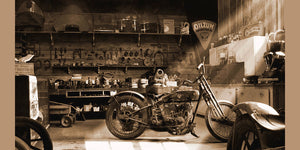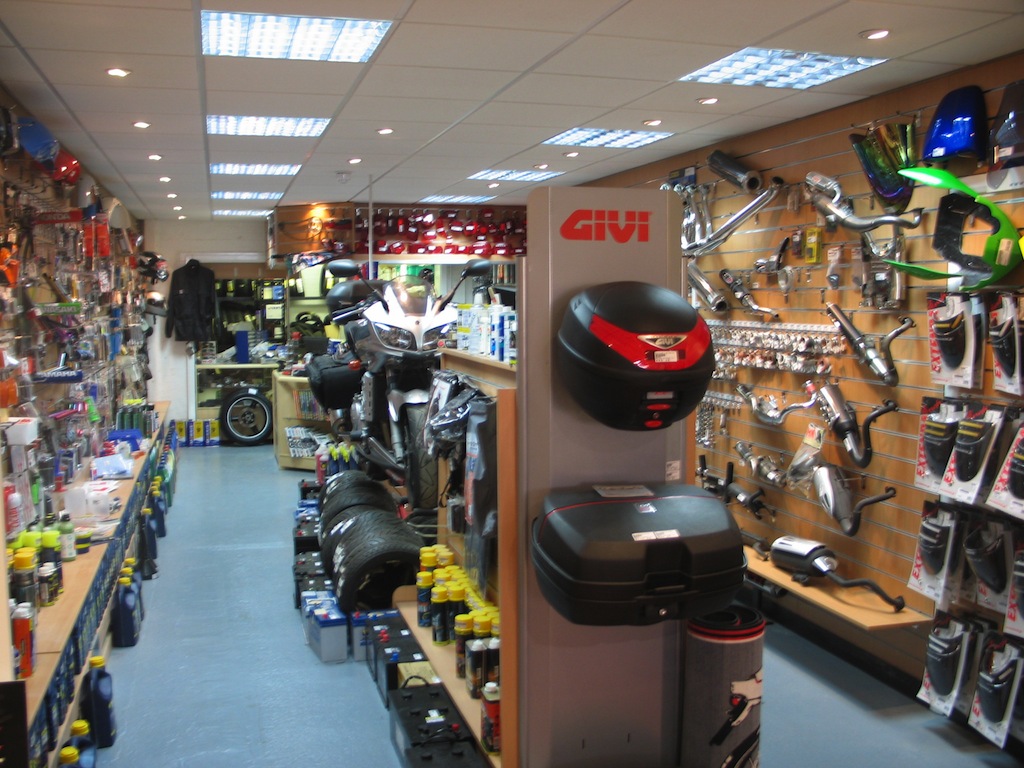Comprehending the Vital Parts of a Bike: A Comprehensive Overview for Fanatics
For motorcycle lovers looking to boost their riding experience and ensure their bikes run smoothly, understanding the crucial components of a motorbike is vital. Each component, from the engine's intricate functions to the important function of the stopping mechanisms, not only influences efficiency yet also security and comfort. This guide will certainly go through the basic components that every rider need to know with, enabling educated choices in both maintenance and potential upgrades. As we begin this expedition, one must ask: exactly how does each part communicate to develop the smooth ride every enthusiast looks for?
Engine Components

The camshaft plays a critical function in managing the timing of the engine's valves, guaranteeing the accurate opening and closing essential for reliable fuel and air intake, in addition to exhaust expulsion. This timing is vital to preserving optimal engine performance and efficiency. Furthermore, the carburetor or gas shot system, relying on the motorbike design, is in charge of blending air with gas in the appropriate ratio for burning.
The cooling system, either air or liquid-based, works to preserve the engine's temperature within operational limitations, stopping overheating and guaranteeing durability - motorbike shop. Each component, thoroughly designed and integrated, adds to the smooth operation of the engine, specifying the bike's power result and total efficiency
Transmission System
Important to the motorcycle's performance, the transmission system makes certain reliable power transfer from the engine to the wheels. This system comprises numerous vital components, consisting of the clutch, gearbox, and last drive, each playing a crucial role in converting the engine's power into movement. The clutch, commonly operated by a hand bar, offers to disengage the engine and involve from the transmission, permitting smooth gear adjustments and controlled velocity.
The gearbox, often described as the transmission proper, contains a collection of gears that riders can by hand shift with to readjust the bike's rate and torque output. These equipments are organized in a sequence that makes it possible for the bike to accelerate smoothly and maintain optimum engine efficiency across numerous rates. A lot of motorbikes utilize a sequential transmission, needing the motorcyclist to change equipments in a predetermined order.
Braking Systems
While recognizing the transmission system is key to harnessing a bike's power, just as crucial is the capacity to regulate and quit that power properly, which is where braking mechanisms come into play. Brakes are essential for security and performance, offering the biker with the essential control to browse various surfaces and problems. Normally, motorcycles include 2 sorts of braking systems: disc brakes and drum brakes.
Disc brakes are a lot more prevalent in modern bikes due to their exceptional performance. They include a brake disc, caliper, and pads. When turned on, the caliper squeezes the brake pads versus the rotating disc, transforming kinetic energy into warm, therefore slowing the wheel. This system provides much better warm dissipation, regular performance, and enhanced quiting power, particularly in damp problems.
On the other hand, drum brakes, though less typical, are still found in some motorbikes. They work by pressing brake footwear against the internal surface area of a drum connected to the wheel. While normally less efficient in warmth dissipation and quiting power, drum brakes are easier and much more cost-efficient.
Understanding these stopping systems' nuances allows bikers to keep their motorcycles properly and appreciate the engineering that makes certain efficient and risk-free stopping.
Suspension and Guiding
Suspension and steering systems are important components that significantly affect a bike's handling and experience comfort. The shock absorber, including forks at the front and shock absorbers at the rear, takes in roadway abnormalities, enhancing security and control. Front forks, generally telescopic or inverted, compress and rebound to reduce influences, while rear shock absorbers preserve tire call with the roadway, essential for traction and safety.
Guiding, focused around the handlebars, connects the motorcyclist to the motorbike's directional control. The guiding head bearings make sure smooth procedure, allowing precise ability to move. Appropriate positioning and maintenance of these bearings are vital for foreseeable steering feedback and decreasing motorcyclist tiredness.
The suspension's adjustability is an additional critical facet; preload, damping, and rebound settings allow modification to suit numerous riding problems and designs. This adaptability is vital for optimizing performance, whether navigating urban roads or tackling sturdy tracks. Advancements like electronic shock absorber provide real-time changes, improving trip high quality across varied terrains.

Electric Solutions
After making certain a controlled and smooth ride with reliable suspension and guiding systems, attention turns to the electrical systems, a critical facet of modern-day motorbikes. These systems play a vital duty not just in starting the engine however also in powering numerous parts that improve the performance and safety of the motorbike.
At the heart of a motorbike's electric system is the battery, which stores electric power essential for beginning the engine and powering auxiliary systems - motocross parts nz. The alternator or generator, combined with the rectifier-regulator, makes sure the battery continues to be billed while the motorbike functions, transforming mechanical energy into electric energy and maintaining voltage degrees
The ignition system, another important part, is in charge of igniting the air-fuel mixture in the engine's cylinders. Modern bikes typically make use of a digital ignition system, using higher efficiency and reliability contrasted to conventional systems.
Lighting systems, consisting of headlights, tail lights, and indications, are likewise important, making sure exposure and security for the motorcyclist. Additional digital components such as sensing units, control units, and shows contribute to innovative functions like gas shot management, anti-lock braking systems (ABS), and digital control panels, even more improving the riding experience.
Conclusion
A thorough comprehension of a motorbike's necessary elements, consisting of the engine, transmission system, braking devices, suspension, steering, and electric systems, is crucial for fanatics aiming to optimize safety and security, convenience, and performance. Mastery of these components enables for educated decisions relating to maintenance and upgrades, motorcycle clothing store near me ultimately improving the riding experience. By integrating this knowledge, bikers can guarantee their motorcycles run at peak efficiency and integrity, therefore making best use of both satisfaction and longevity of their automobiles.
For motorbike fanatics looking to elevate their riding experience and guarantee their bikes run smoothly, recognizing the necessary components of a motorcycle is paramount.Essential to the motorcycle's functionality, the transmission system ensures efficient power transfer from the engine to the wheels.While comprehending the transmission system is vital to harnessing a motorbike's power, equally essential is the capacity to manage and stop that power successfully, which is where braking devices come into play. Generally, motorbikes feature 2 kinds find out this here of braking systems: disc brakes and drum brakes.
A detailed understanding of a motorcycle's important parts, including the engine, transmission next system, braking devices, suspension, guiding, and electrical systems, is indispensable for enthusiasts aiming to maximize safety and security, convenience, and efficiency.
Comments on “Unleash Efficiency with Premium Motox Parts NZ Available Below”